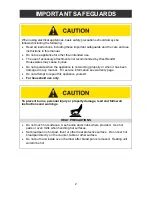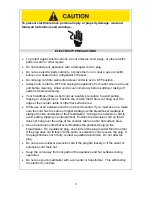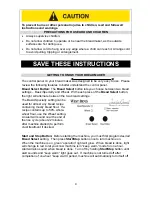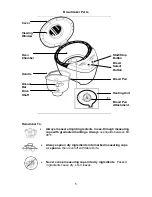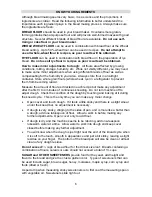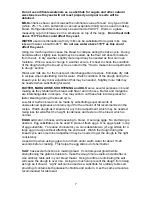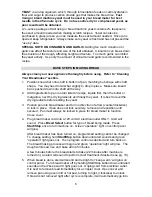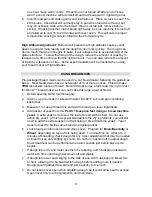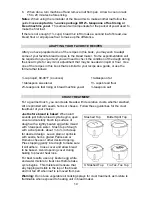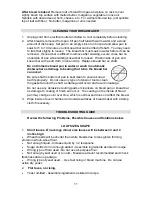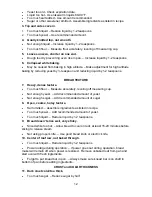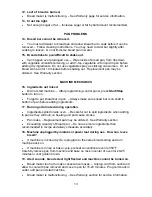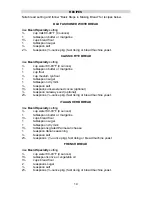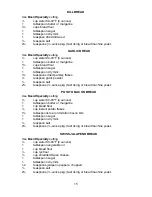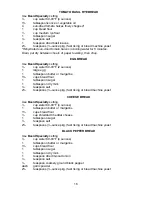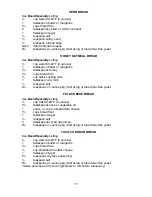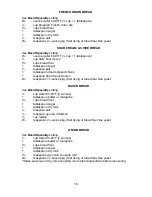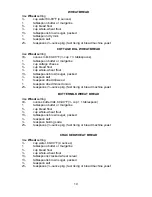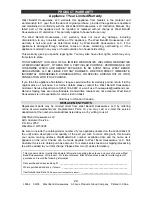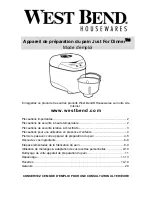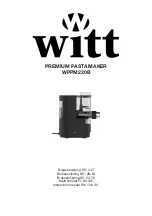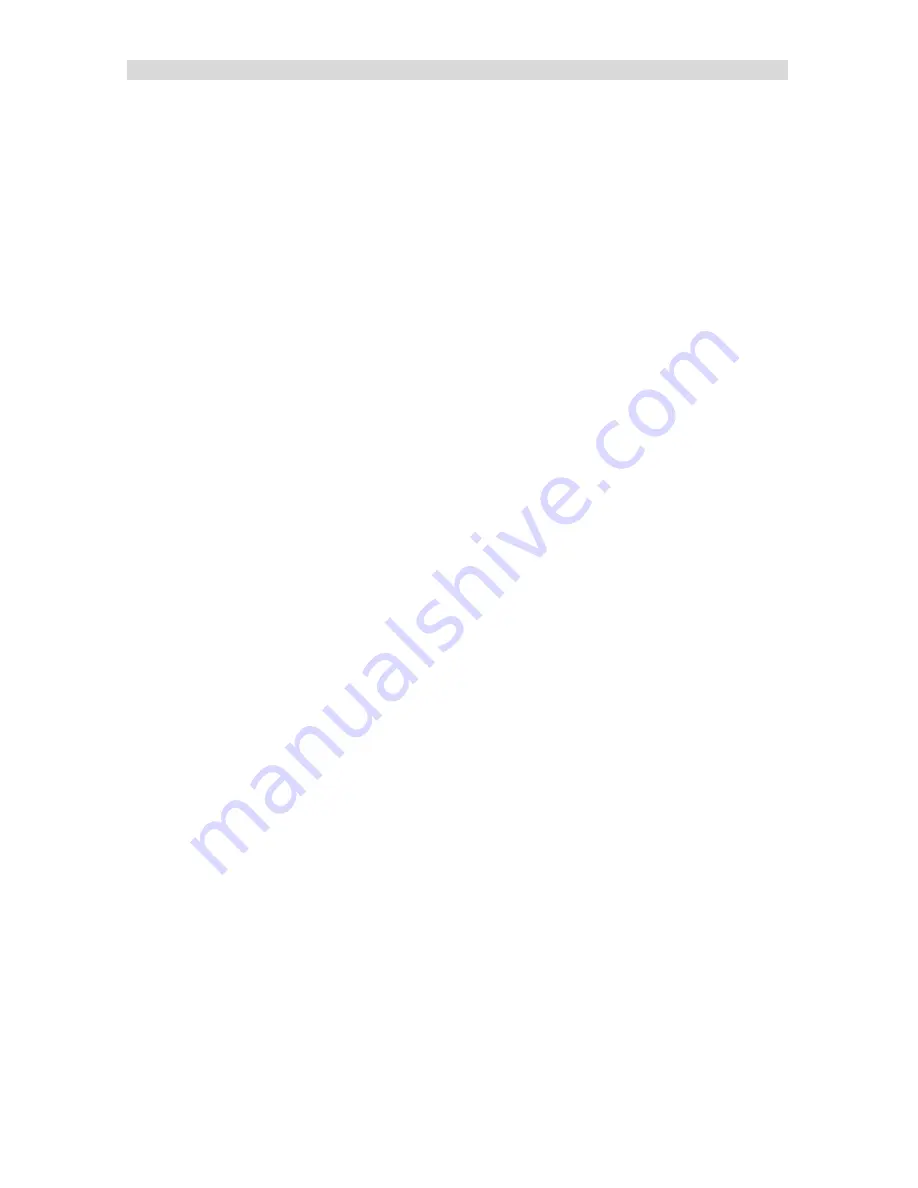
6
KNOW YOUR INGREDIENTS
Although bread making seems very basic, it is a science and the proportions of
ingredients are critical. Read the following information to better understand the
importance each ingredient plays in the bread making process. Always make sure
the ingredients are fresh.
BREAD FLOUR
should be used in your bread maker. It contains more gluten-
forming proteins than all-purpose flour and will provide well-formed loaves with good
structure. Several different brands of bread flour are available.
Do not use self-
rising or cake flour in your bread maker.
WHOLE WHEAT FLOUR
can be used in combination with bread flour at the Wheat
bread setting. Up to 50% wheat flour can be used in recipes.
Do not attempt to
use all whole-wheat flour in recipes, as poor results will be obtained.
RYE FLOUR
can be used in combination with bread flour in the preparation of rye
bread.
Do not use all rye flour in recipes as poor results wil be obtained.
How to make minor adjustments to dough:
All flours are affected by growing
conditions, milling, storage, humidity, etc. While not visibly different, you may need
to make some minor adjustments when using different brands of flour as well as
compensating for the humidity in your area. Always store flour in an airtight
container. Store whole grain flours (whole wheat, rye) in a refrigerator to prevent
them from becoming rancid.
Measure the amount of flour as directed in each recipe but make any adjustment
after the first 3 to 4 minutes of continuous kneading. Do not turn machine off to
adjust dough. Check the condition of the dough by touching and looking at it during
the knead cycle. This is the only time you can make any minor change.
•
Open cover and touch dough. If it feels a little sticky and there is a slight smear
under the knead bar, no adjustment is necessary.
•
If dough is very sticky, clinging to the sides of pan, and is more like a batter than
a dough, add one tablespoon of flour. Allow to work in before making any
further adjustments. Open cover only to add flour.
•
If dough is dry and the machine seems to be laboring, add one-teaspoon
lukewarm water at a time. Allow water to work into dough and keep cover
closed before making any further adjustment.
•
You will know when the dough is just right near the end of the knead cycle when
it is soft to the touch, smooth in appearance and just a bit sticky, leaving a slight
residue on your finger. The bottom of the bread pan will also be clean or almost
clean of any dough residue.
Do not exceed
1
⅓
cups of bread flour for the dinner size loaf. Breads containing a
combination of flours, cereals or oats should not exceed a total of 1½ cups.
SUGAR and OTHER SWEETENERS
provide food for the yeast, add height and
flavor to the bread and give the crust a golden color. Types of sweeteners that can
be used include sugar, brown sugar, honey, molasses, maple syrup, corn syrup and
fruits (dried or fresh).
A special tip when measuring sticky sweeteners is to first coat the measuring spoon
with vegetable oil. Sweeteners slide right out.


